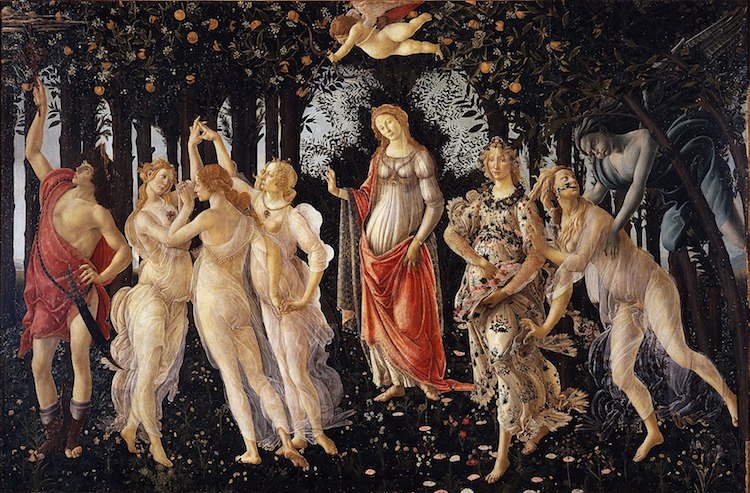In fourteen century Italy, with the economic recovery, the rise of cities and the improvement of living standards, people gradually changed their pessimistic and despairing attitude towards real life and began to pursue the pleasure of secular life, and self-confidence, individuality, and innovation all came along with the movement of rebirth of classical culture, which was contrary to the proposition of Catholicism. During the time from the 15th century to the 17th century, which is defined by art historian as 'Renaissance', some of the prominent features were showing up from literature to art, like Stokstad in his book mentioned, 'Artists, like the humanists, turned to Classical antiquity for inspiration, emulating ancient Roman sculpture and architecture even as they continued to fulfil commissions for predominantly Christian subjects and buildings....Rather than seeking to describe the visual appearance of nature through luminosity and detailed textural differentiation, Italian artists aimed at achieving lifelike but idealized weighty figures set in a space organized through strict adherence to linear perspective, a mathematical system that gave the illusion of a measured and continuously receding space.'(P609) The following artworks of these four artists show the mean ideas of these changes.
 |
| Mary of Burgundy Painter MARY AT HER DEVOTIONS, HOURS OF MARY OF BURGUNDY before 1482 |
 |
| Workshop of the Master of Flemalle MERODE ALTERPIECE(OPEN),(TRIPTYCH OF THE ANNUNCIATION) c.1425-1430 |
The people on the left part of the triptych are the donors of this painting. This painting was painted as one panel but was expanded into three under the patronage of the couple on the left panel. This is a sign that as human being people can stand by God at the same time and be painted as the same size as the Holy figures. This notion emphasizes the importance of human which is part of the features of the Renaissance. Just like what Stokstad said about the patronage of that time in his book, ‘All these patrons expected the artists to reaffirm and glorify their achievements with works that were not only beautiful but intellectually powerful.’ The donors get salvation for themselves as well as their families by letting the artists paint them with the Gods together.
On the right panel, there is Joseph, the husband of Mary, working in his workshop and drilling holes on a board, which is for making wine for the Eucharist and Christ’s Passion.
 |
Jan and Hubert van Eyck
GHENT ALTARPIECE (OPEN), ADORATION OF THE MYSTIC LAMB
Completed in 1432.
|
On the frame of this painting, there is an inscription “The painter Hubert van Eyck, greater than whom no one was found, began [this work]; and Jan, his brother, second in art, having carried through the task at the expense of Jodocus Vyd, invites you by this verse, on the sixth of May [1432], to look at what has been done.”, which shows that it was both Jan and Hubert van Eyck who made this painting, but who exactly painted this picture is still a mystery.
However, what is clear nowadays is that the commission is from a wealthy financier Jodocuz Vijd. He and his wife Isabella Borluut were painted on the outside shutters. Different from the outside shutters, the inside panels were painted with more vibrant colours. We can see the God sits right at the centre of the panel with his red robe, wearing the papal crown, and the luxury crown next to his feet. The people sitting next to God are Virgin Mary and John the Bapist, and angels playing instruments, and then the Adam and Eve, which were painted in a more lifelike human being. On the lower panel, we can see the meadow on the horizon line, and saints were together adoring the Lamb, who is letting the blood flow into a chalice, then to the fountain of life. This painting was moved to Paris, during the French occupation of Flanders, and during the time of world war two, it was confiscated by the Nazis. Now it is displayed in Cathedral of St. Bavo in Ghent, where it was made.
 |
Sandro Botticelli
PRIMAVERA
c. 1482.
|
No comments:
Post a Comment